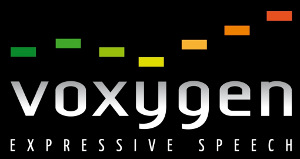Approaches to Better Communication
It is widely known that children with developmental or language disabilities like autism have difficulties with identifying words from their sound or spelling. They need a different way of identifying words and using them to build their language and communication skills. In an interesting conversation with an Augmentative and Alternative Communication (AAC) expert we discussed two approaches that have worked well to build communication in the context of these disabilities: Picture Identification and Motor Planning. Picture Identification The Picture Exchange Communication System (PECS), which uses pictures/symbols as re-enforcers and communication enablers, have been researched and developed since 1985. They use the high level of visual intelligence of children with autism to ‘short-circuit’ the pathway to verbal skills. While PECS started work mostly with children, over the years, the system has become more widespread with users across age groups.
The Picture Exchange Communication System (PECS), which uses pictures/symbols as re-enforcers and communication enablers, have been researched and developed since 1985. They use the high level of visual intelligence of children with autism to ‘short-circuit’ the pathway to verbal skills. While PECS started work mostly with children, over the years, the system has become more widespread with users across age groups.
 Language Acquisition through Motor Planning (LAMP) is another therapeutic approach based on neurological and motor learning principles. In this system, they remember where to find a word, not by looking at the picture with which it’s represented, but by using muscle memory to ‘remember’ where and how they tapped to activate the picture. With approaches like this, children with autism are found to have increased ability to communicate spontaneously in any environment using unique combinations of words.
Both picture identification and motor planning are great AAC strategies, and for most children, one of these two strategies, used consistently for a period of time, could result in great improvement of communication skills.
Apps like Avaz, are a natural evolution of systems like PECS and LAMP. Allowing for extremely easy customization options, Avaz brings both Picture Identification and Motor Planning seamlessly together. In our next post, we will share with you the details of the customizations possible in Avaz, that will help your child use these two approaches to better their communication.
Language Acquisition through Motor Planning (LAMP) is another therapeutic approach based on neurological and motor learning principles. In this system, they remember where to find a word, not by looking at the picture with which it’s represented, but by using muscle memory to ‘remember’ where and how they tapped to activate the picture. With approaches like this, children with autism are found to have increased ability to communicate spontaneously in any environment using unique combinations of words.
Both picture identification and motor planning are great AAC strategies, and for most children, one of these two strategies, used consistently for a period of time, could result in great improvement of communication skills.
Apps like Avaz, are a natural evolution of systems like PECS and LAMP. Allowing for extremely easy customization options, Avaz brings both Picture Identification and Motor Planning seamlessly together. In our next post, we will share with you the details of the customizations possible in Avaz, that will help your child use these two approaches to better their communication. admin July 15th, 2013
Posted In: Blog
Tags: AAC, autism, Avaz, communication, LAMP, Language Acquisition through Motor Planning, parent, PECS, Picture Exchange Communication System, strategy




